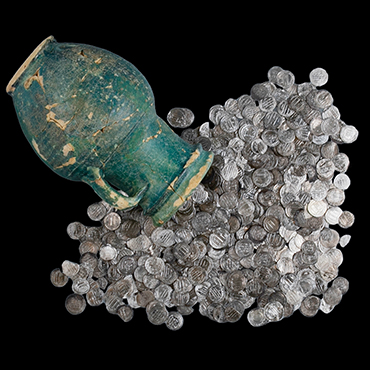The National Museum–Sultanate of Oman, established by Royal Decree in AH 1435/2013 CE, is the Sultanate of Oman’s flagship cultural institution, showcasing the Omani’s heritage from its earliest human settlements to the present day. As a national institution with global outreach, the museum ensures that Oman’s cultural heritage is recognized and appreciated not only within the Sultanate of Oman, but also internationally. Its permanent galleries are dedicated to various aspects of the history of the Sultanate of Oman and its connections to the wider world, particularly through the country’s rich maritime traditions.
These maritime traditions are highlighted in the Museum’s presentation, which celebrates the significant advancements in navigation made by Omani sailors. Most famous among them is Ahmad bin Majid as-Sa’di, born in Julfar in the 9th century AH/15th century CE and recognized as one of the greatest Arab navigators. He penned a number of poetic works on sailing, including instructions for using the kamal, a navigation tool for measuring the altitude of the stars. Ibn Majid’s legacy is evident in the works of Omani navigator-scholars of the 14th century AH/20th century CE including the anonymous author of Nabhat al-Ghafil fi Ma‘arifat Hisbat al-Manazil (A Reminder to the Heedless on Calculating the Celestial Stations) and Nasser al-Khaduri, author of Ma‘dan al-Asrar fi ‘Ilm al-Bihar (A Treasury of Secrets on Ocean Navigation). The story of long-distance travel is rounded out with a selection of coins from different parts of the world but found in Oman—evidence of the rich trade that flourished around the Indian Ocean as advancements in navigation fostered travel and exchange.
Coins from the Sinaw hoard
This hoard of nearly one thousand silver coins vividly exemplifies Oman’s wide connections as a result of navigation and trade. Discovered in Sinaw, the hoard includes many coins dating from a 1st-century BH/6th-century CE Sasanian example to a 3rd-century AH/9th-century CE Abbasid specimen. The coins were minted in Córdoba, Baghdad, Samarkand, and other famed locales. The hoard also demonstrates the many monetary systems in use in the Indian Ocean economy, across which merchants had to calculate payment.
The Sinaw hoard may have been buried as early as AH 92–8/710–17 CE. The coins were originally deposited in stacks and were probably collected over a long stretch of time. At a period when there were no banks, the silver coins in the Sinaw hoard were used for small transactions instead of gold dirhams.
The hoard is the first of its period reported from Oman and only the second to have come to light in the Arabian Peninsula. It is also the largest currency treasure unearthed in Oman to date. The relative scarcity of silver hoards in Arabia may be linked to the common practice of melting down old silver coins to make jewelry or bullion.
Sinaw, North al-Sharqiyah Governorate, Oman, AH 92–8/710–17 CE
Glazed pottery and silver, h. 26 × diam. 12 cm
The National Museum—Sultanate of Oman, 2013.2056

